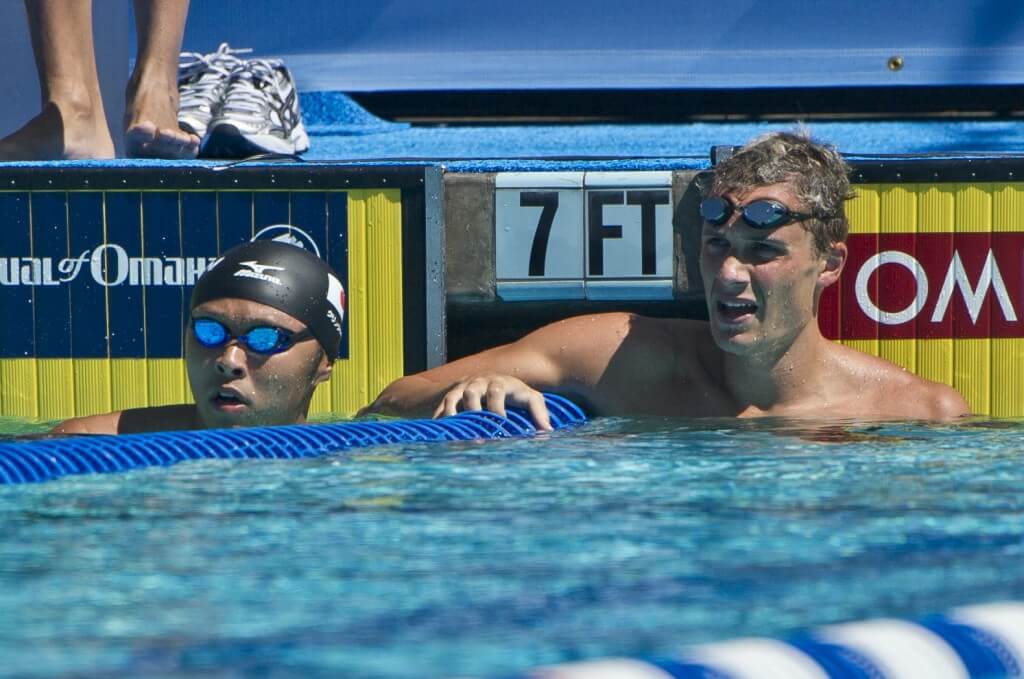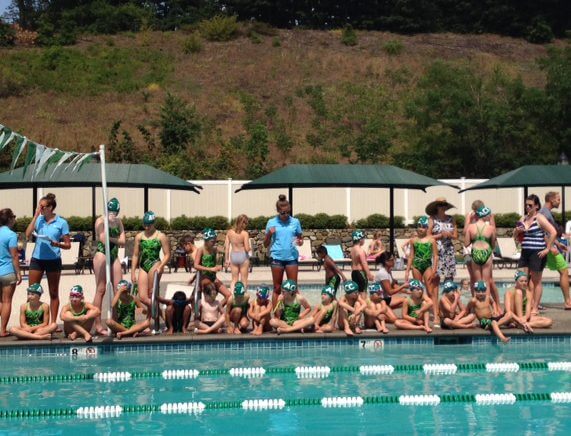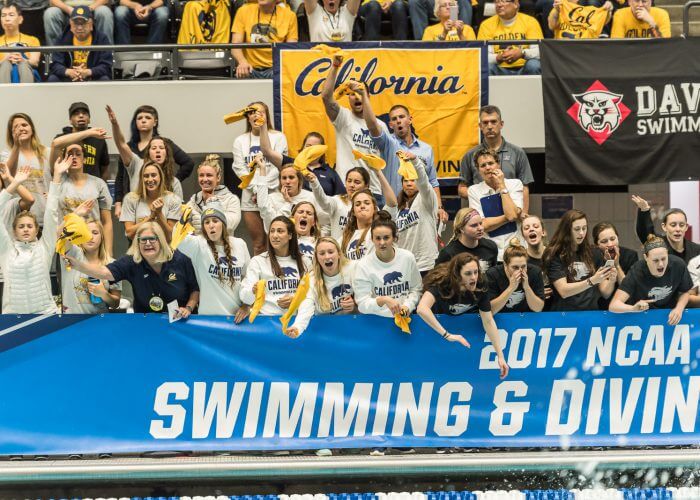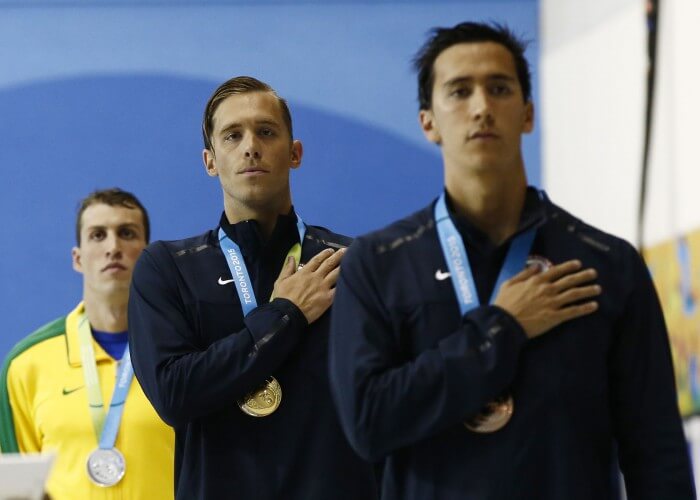3 Major Cultural Differences Between Swimming in Japan versus in the U.S.

By Shunichi Fujishima, Swimming World College Intern.
With the 17th FINA World Championships in Budapest just around the corner, all eyes are focused on the rosters of the major powerhouses in the swimming world. While countries such as Japan, Australia, and Great Britain have already had their qualification meet for the World Championships and have a finalized roster, the Americans are currently battling it out at the 2017 Phillips 66 Nationals & World Championship Trials to see who makes the Team USA roster.
I have rare insight into the major differences between two powerhouse countries– Japan and the US. I’ve been a competitive swimmer in Japan my whole life, and have swum in the US during summer vacations and now, as a swimmer at the University of the Pacific. With Team Japan’s medal count increasing at every international competition for the past few years, it’s interesting to see what Japan does differently from the U.S.
Here are three major differences between being a competitive swimmer in Japan versus the United States:
1. Which comes first…club swimming or summer league?

Photo Courtesy: Colleen Collins
It is a common thing for a swimmer in the U.S. to join a competitive club team after doing several years of either the recreational program or summer league in their area. Ari Pugh, only two years old, who swims for the summer league team called the Stingray’s in Stockton, made her first lap on her own last week, later explaining how much she loved swimming while jumping out and down.
In comparison, if you are a swimmer in Japan, you most likely started year-round competitive swimming at a very young age. There are obviously pros and cons to both sides. While it may seem better to be in the sport from a younger age for multiple reasons, there is a chance that you may burn out and quit the sport at a younger age as well. But, there is no doubt that learning the fundamentals early on is very beneficial. It’s hard for a partial competitive swimmer to transition into the full-time demands of this sport.
High school swim season is also a pretty big thing for students here in the U.S. Whether it be dual meets or sectionals, swimmers get pumped for their swims and swim hard for their teammates. Japan does not have high school swimming. Swimming is strictly a club sport– which makes it more difficult for people to be attracted to the sport.
2. Division I, Division II, Division III….Division IV, Division V.

Photo Courtesy: Peter H. Bick
What I love about the college swimming in the U.S. is that everyone has a chance. You don’t really see a lot of competitive swimmers who did not start young in Japan. In America, I feel as if the options are endless. While it is very hard and requires a major commitment to make a Division I team, there are a lot of options such as Division II, Division III, NAIA, NJCAA, and etc. Although some Japanese universities do offer swimming without a national appearance, it would be more of a minor college (roughly Division III). In Japan, the number of competitive swimmers decreases dramatically as they get older, while in the U.S., it stays relatively stable.
Which leads to the countries’ medal counts at the Rio Olympics: the United States earned 33 swimming-related medals compared to Japan’s seven. Thus, it’s safe to say that Team USA is a significantly stronger swimming nation than Japan. But the Olympic Trial cuts between the two countries are also notably different. Team USA’s Olympic Trial cut in the men’s 200 breaststroke was 2:18.39, compared to Japan’s 2:13.46. The men’s 200 fly cuts were 2:01.99 to Japan’s 1:59.57, respectively. This clearly shows that Japan could potentially be limiting its number of swimmers by assigning such an arduous cut.
For example, Zach Apple, who is going viral right now for suddenly seeding first going into finals of the 100 free at the U.S. Nationals, placed 35th in the 100 free last year at Olympic Trials, with a time of 50.18. That time would’ve only barely made the cut to get into the Japanese Nationals. You never know when a swimmer could suddenly burst out of his or her bubble.
3. Meet Structure and the National Anthem

Photo Courtesy: Rob Schumacher/USA Today Sports Images
Swim meets in Japan are very well-structured compared to the U.S. meets. In Japan, you are required to head to the waiting area (clerk of course), check-in again behind the blocks and then swim, no matter what level of competition. I almost missed my first race here in the U.S., not knowing that you head straight to the blocks before your race.
Another major difference is that the U.S. plays the national anthem before every swim meet. The only time you would hear the Japanese anthem in the swimming world is when a Japanese swimmer wins gold at a major competition and the venue plays it during the award ceremony. That to me is a major cultural difference. I always wonder how much impact the national anthem has on amateur swimmers, psychologically.
Budapest will be an early forecast of what’s to come in Tokyo 2020. The major differences that are provided above, unquestionably, tie directly to the country’s own unique culture. No one culture is better than the other. What could potentially make the next generation’s star swimmer could be to take the best of both worlds and to utilize it to create a swimmer with a mixture of both cultures. Whether it be the Japanese way or the American way, there is proof that an Olympic Champion can be produced.
Commentary: All commentaries are the opinion of the author and do not necessarily reflect the views of Swimming World Magazine nor its staff.




Krysta Cummings Yasuko needs Facebook so I can tag her on this!
While the US definitely has more medals in swimming than Japan a lot of that probably has to do with body type as well. My quarter daughter is a competitive swimmer and well size does matter in swimming.